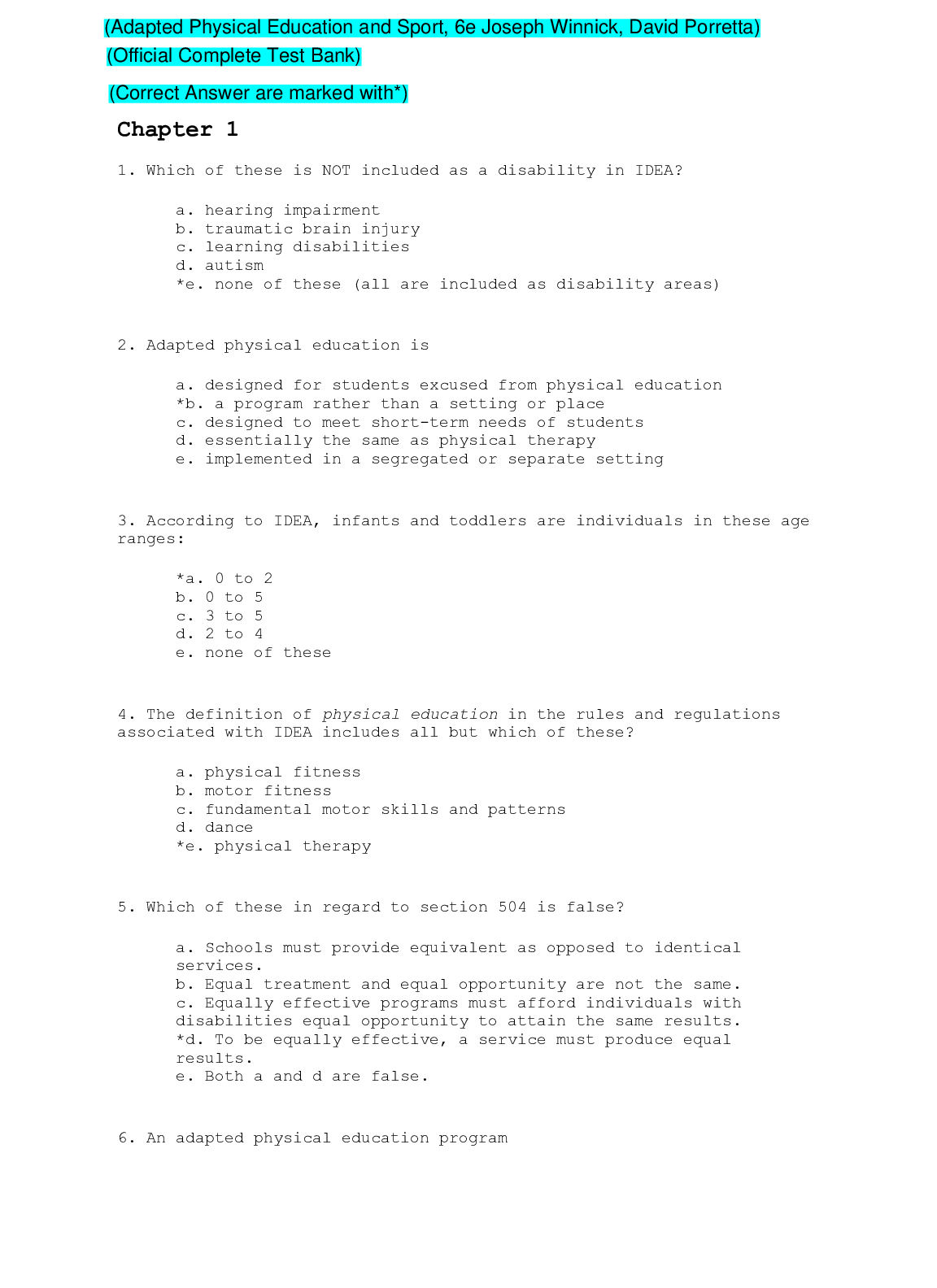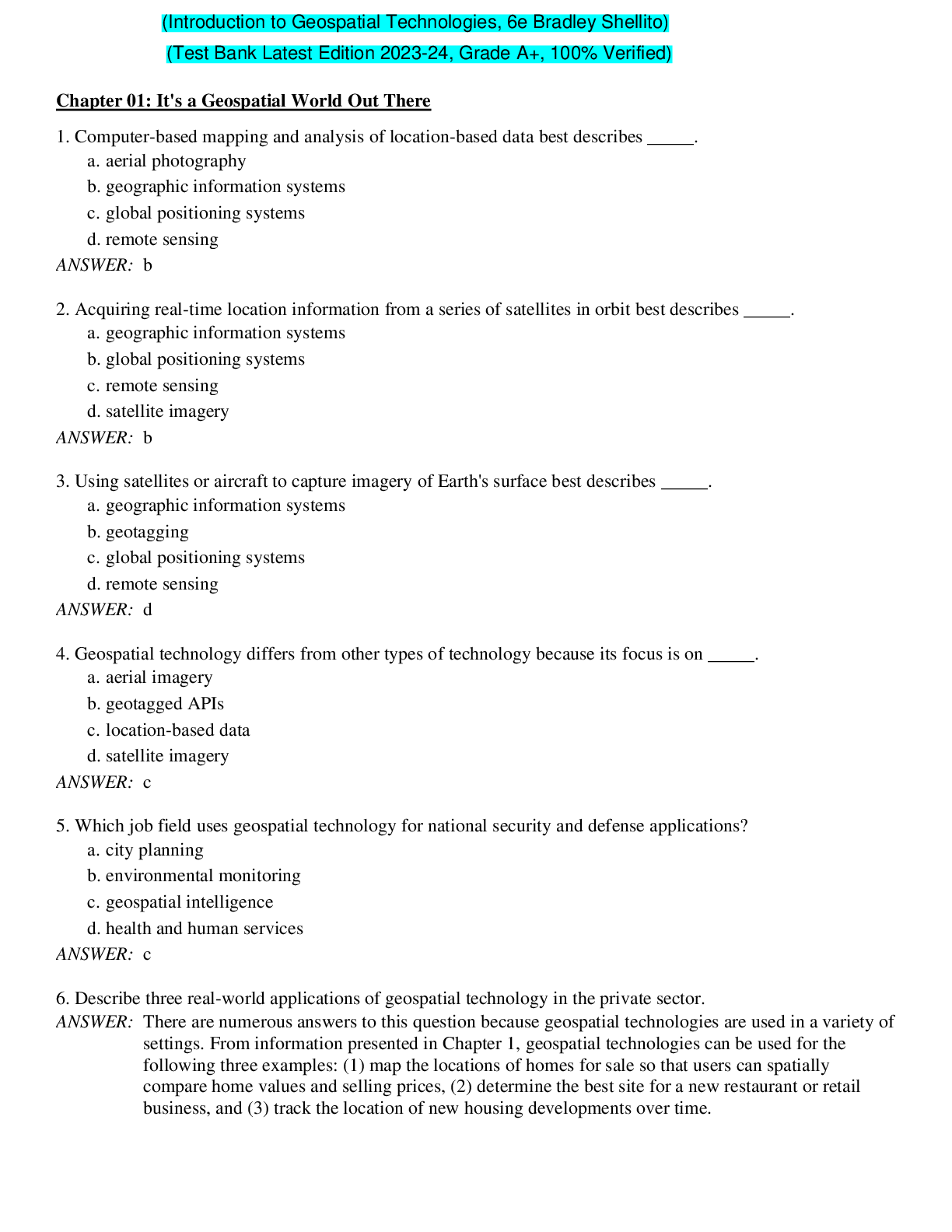CRITICAL CARE NURSING > TEST BANK > Test bank for primary care 6th edition by buttaro (All)
Test bank for primary care 6th edition by buttaro
Document Content and Description Below
Primary Care Interprofessional Collaborative Practice 6th Edition Buttaro Test Bank TEST BANK FOR PRIMARY CARE 6TH EDITION BY BUTTARO TEST BANK FOR PRIMARY CARE 6TH EDITION BY BUTTARO Chapter 0... 1: Interprofessional Collaborative Practice: Where We Are Today Buttaro: Primary Care: A Collaborative Practice, 6th Edition NURSINGTB.COM MULTIPLE CHOICE 1. A small, rural hospital is part of an Accountable Care Organization (ACO) and is designated as a Level 1 ACO. What is part of this designation? a. Bonuses based on achievement of benchmarks b. Care coordination for chronic diseases c. Standards for minimum cash reserves d. Strict requirements for financial reporting ANS: A A Level 1 ACO has the least amount of financial risk and requirements, but receives shared savings bonuses based on achievement of benchmarks for quality measures and expenditures. Care coordination and minimum cash reserves standards are part of Level 2 ACO requirements. Level 3 ACOs have strict requirements for financial reporting. 2. What was an important finding of the Advisory Board survey of 2014 about primary care preferences of patients? a. Associations with area hospitals b. Costs of ambulatory care c. Ease of access to care d. The ratio of providers to patients ANS: C NURSINGTB.COM As part of the 2014 survey, the Advisory Board learned that patients desired 24/7 access to care, walk-in settings and the ability to be seen within 30 minutes, and care that is close to home. Associations with hospitals, costs of care, and the ratio of providers to patients were not part of these results. MULTIPLE RESPONSE 1. Which assessments of care providers are performed as part of the value-based purchasing (VBP) initiative? (Select all that apply.) a. Appraising costs per case of care for Medicare patients b. Assessing patients’ satisfaction with hospital care c. Evaluating available evidence to guide clinical care guidelines d. Monitoring mortality rates of all patients with pneumonia e. Requiring advanced IT standards and minimum cash reserves ANS: A, B, D Value-based purchasing looks at five domain areas of processes of care, including efficiency of care (cost per case), experience of care (patient satisfaction measures), and outcomes of care (mortality rates for certain conditions). Evaluation of evidence to guide clinical care is part of evidence-based practice. The requirements for IT standards and financial status are part of Accountable Care Organization standards. TEST BANK FOR PRIMARY CARE 6TH EDITION BY BUTTARO Chapter 02: Translating Research into Clinical Practice Buttaro: Primary Care: A Collaborative Practice, 6th Edition NURSINGTB.COM MULTIPLE CHOICE 1. What is the purpose of Level II research? a. To define characteristics of interest of groups of patients b. To demonstrate the effectiveness of an intervention or treatment c. To describe relationships among characteristics or variables d. To evaluate the nature of relationships between two variables ANS: C Level II research is concerned with describing the relationships among characteristics or variables. Level I research is conducted to define the characteristics of groups of patients. Level II research evaluates the nature of the relationships between variables. Level IV research is conducted to demonstrate the effectiveness of interventions or treatments. 2. Which is the most appropriate research design for a Level III research study? a. Epidemiological studies b. Experimental design c. Qualitative studies d. Randomized clinical trials ANS: B The experimental design is the most appropriate design for a Level III study. Epidemiological studies are aNpUprRopSrIiaNteGfTorBL.eCveOlMII studies. Qualitative designs are useful for Level I studies. Randomized clinical trials are used for Level IV studies. 3. What is the purpose of clinical research trials in the spectrum of translational research? a. Adoption of interventions and clinical practices into routine clinical care b. Determination of the basis of disease and various treatment options c. Examination of safety and effectiveness of various interventions d. Exploration of fundamental mechanisms of biology, disease, or behavior ANS: C Clinical research trials are concerned with determining the safety and effectiveness of interventions. Adoption of interventions and practices is part of clinical implementation. Determination of the basis of disease and treatment options is part of the preclinical research phase. Exploration of the fundamental mechanisms of biology, disease, or behavior is part of the basic research stage. TEST BANK FOR PRIMARY CARE 6TH EDITION BY BUTTARO NURSINGTB.COM Chapter 03: Empowering Patients as Collaborative partners: A New Model for Primary Care Buttaro: Primary Care: A Collaborative Practice, 6th Edition MULTIPLE CHOICE 1. Which statement made by a health care provider demonstrates the most appropriate understanding for the goal of a performance report? a. ―This process allows me to critique the performance of the rest of the staff.‖ b. ―Most organizations require staff to undergo a performance evaluation yearly.‖ c. ―It is hard to be personally criticized but that’s how we learn to change.‖ d. ―The comments should help me improve my management skills.‖ ANS: D The goal of the performance report is to provide guidance to staff in the areas of professional development, mentoring, and leadership development. A peer review is written by others who perform similar skills (peers). The remaining options may be true but do not provide evidence of understanding of the goal of this professional requirement. MULTIPLE RESPONSE 1. Which assessment question would a health care provider ask when engaging in the previsit stage of the new model for primary care? (Select all that apply.) a. ―Are you ready to discuss some of the community resources that are available?‖ b. ―Are you experiencing anNyUsRidSeIefNfeGctTsBfr.omCOyMour newly prescribed medications?‖ c. ―Do you anticipate any problems with adhering to your treatment plan?‖ d. ―Are you ready to discuss the results of your laboratory tests?‖ e. ―Do you have any questions about the lab tests that have been ordered for you?‖ ANS: B, C, E The nursing responsibilities in the previsit stage include assessing the patient’s tolerance of prescribed medications, understanding of existing treatment plan, and education about required lab testing. The primary care provider is responsible for screening lab data and discussing community resources during the actual visit. TEST BANK FOR PRIMARY CARE 6TH EDITION BY BUTTARO NURSINGTB.COM Chapter 04: Coordinated Chronic Care Buttaro: Primary Care: A Collaborative Practice, 6th Edition MULTIPLE CHOICE 1. To reduce adverse events associated with care transitions, the Centers for Medicare and Medicaid Service have implemented which policy? a. Mandates for communication among primary caregivers and hospitalists b. Penalties for failure to perform medication reconciliations at time of discharge c. Reduction of payments for patients readmitted within 30 days after discharge d. Requirements for written discharge instructions for patients and caregivers ANS: C As a component of the Affordable Care Act, the Centers for Medicare and Medicaid Service developed the Readmissions Reduction Program reducing payments for certain patients readmitted within 30 days of discharge. The CMS did not mandate communication, institute penalties for failure to perform medication reconciliations, or require written discharge instructions. 2. According to multiple research studies, which intervention has resulted in lower costs and fewer rehospitalizations in high-risk older patients? a. Coordination of posthospital care by advanced practice health care providers b. Frequent posthospital clinic visits with a primary care provider c. Inclusion of extended family members in the outpatient plan of care d. Telephone follow-up by the pharmacist to assess medication compliance NURSINGTB.COM ANS: A Research studies provided evidence that high-risk older patients who had posthospital care coordinated by an APN had reduced rehospitalization rates. It did not include clinic visits with a primary care provider, inclusion of extended family members in the plan of care, or telephone follow-up by a pharmacist. MULTIPLE RESPONSE 1. Which advantages are provided to the chronically ill patient by personal electronic monitoring devices? (Select all that apply.) a. Helps provide more patient control their health and lifestyle b. Eliminates need for regular medical and nursing follow-up visits c. Helps the early identification of patient health-related problems d. Helps health care providers in keeping track of the patient’s health status e. Cost is often covered by Medicare ANS: A, C, D, E [Show More]
Last updated: 11 months ago
Preview 1 out of 261 pages

Reviews( 0 )
Document information
Connected school, study & course
About the document
Uploaded On
Jun 01, 2023
Number of pages
261
Written in
Additional information
This document has been written for:
Uploaded
Jun 01, 2023
Downloads
0
Views
45

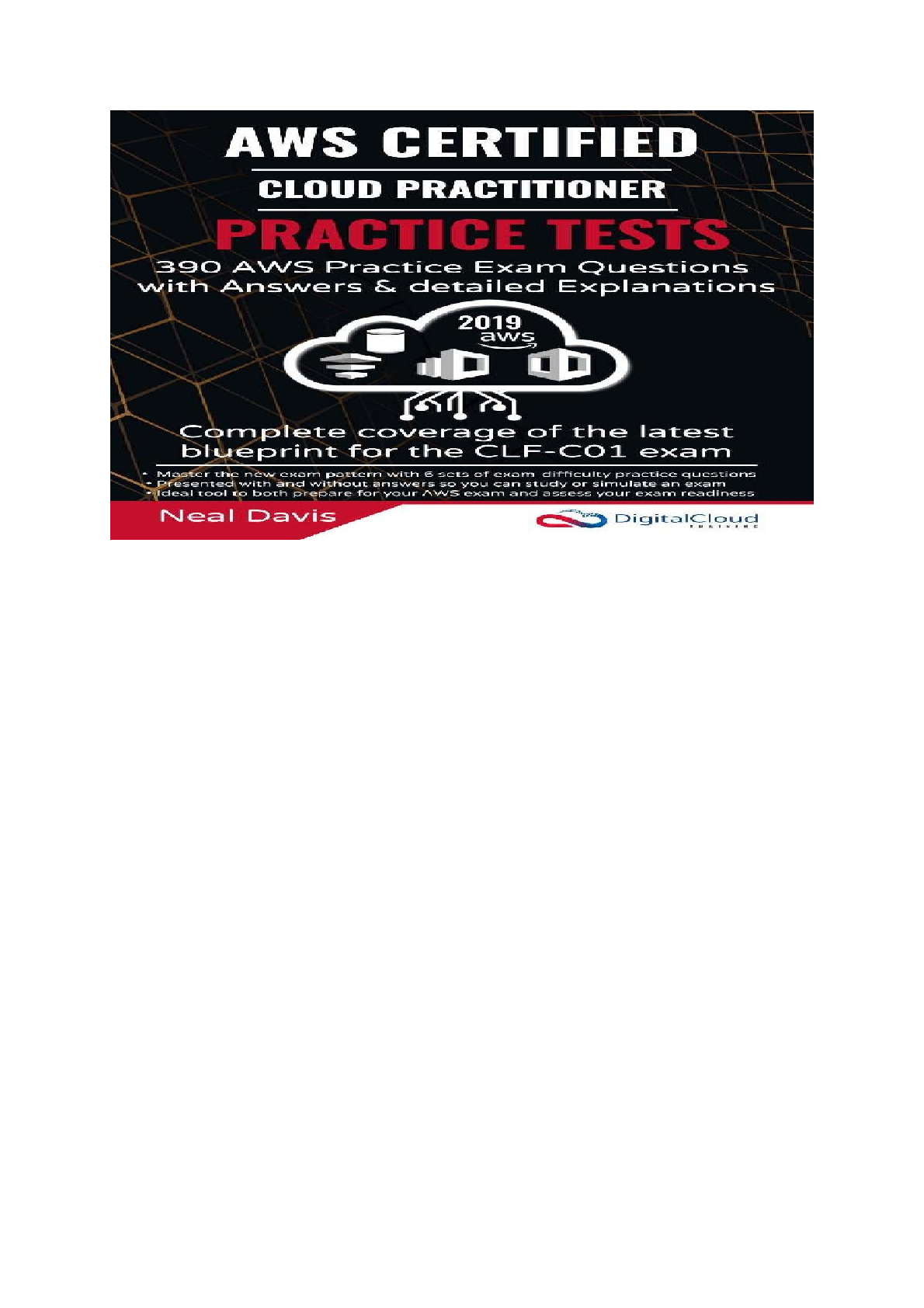

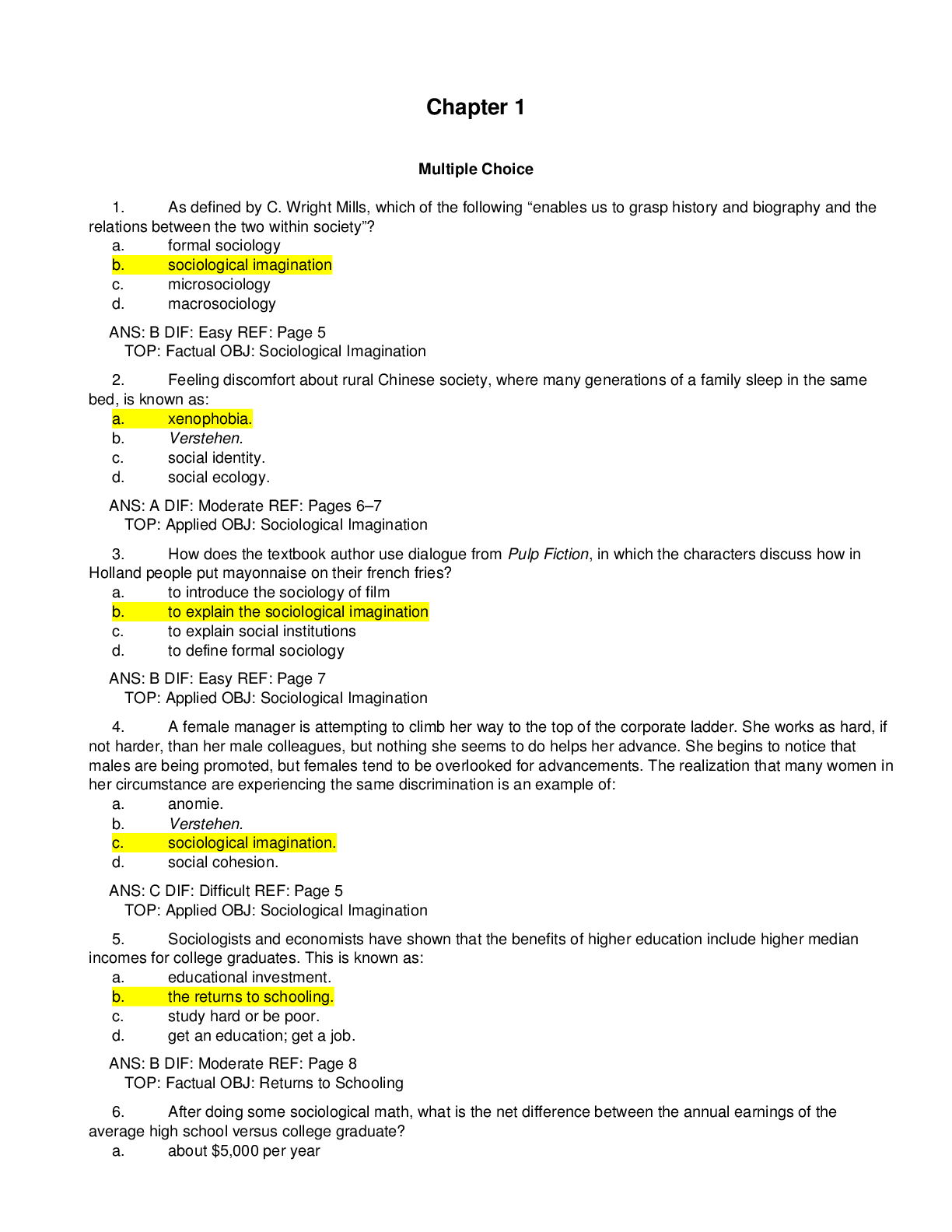



.png)





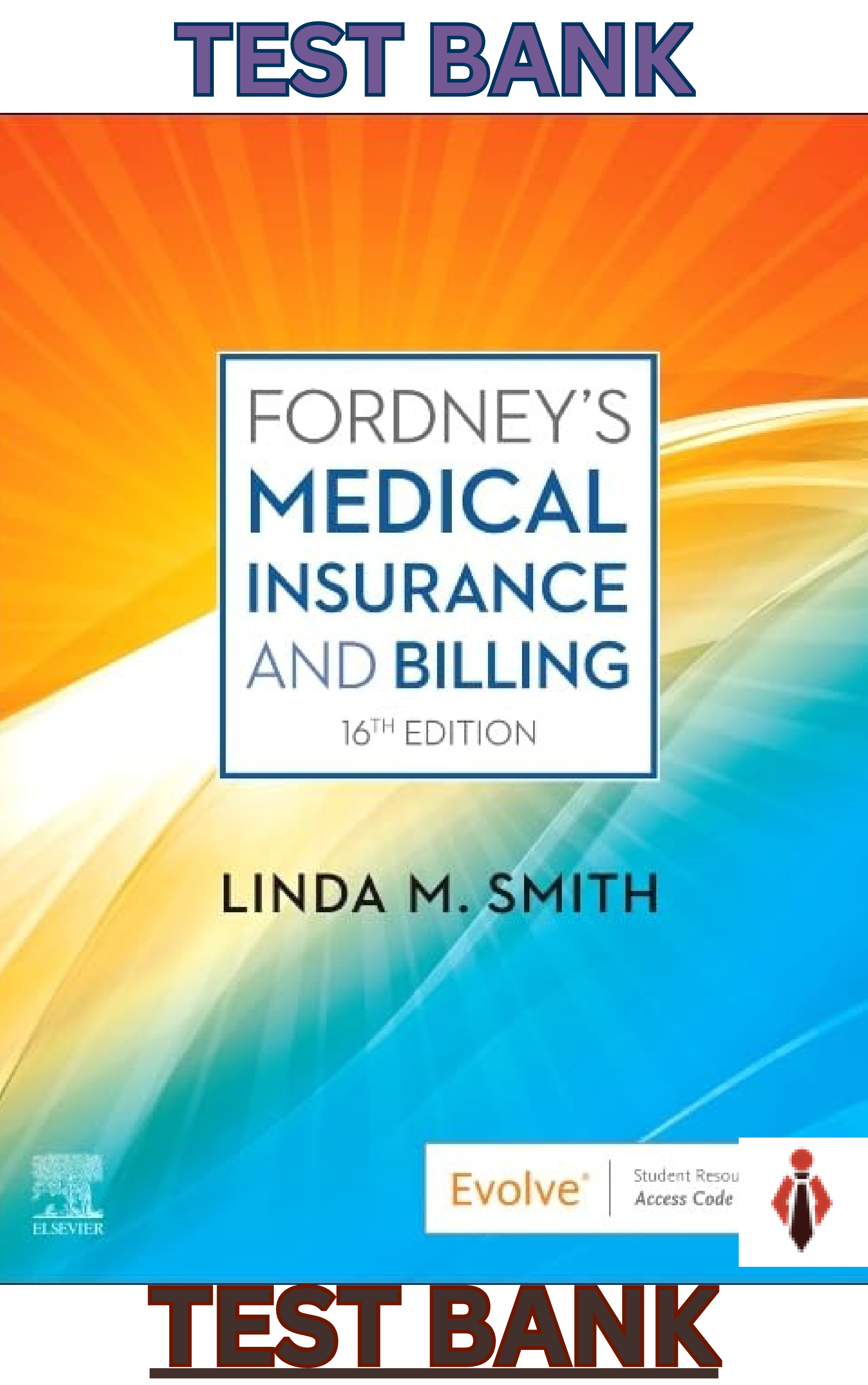

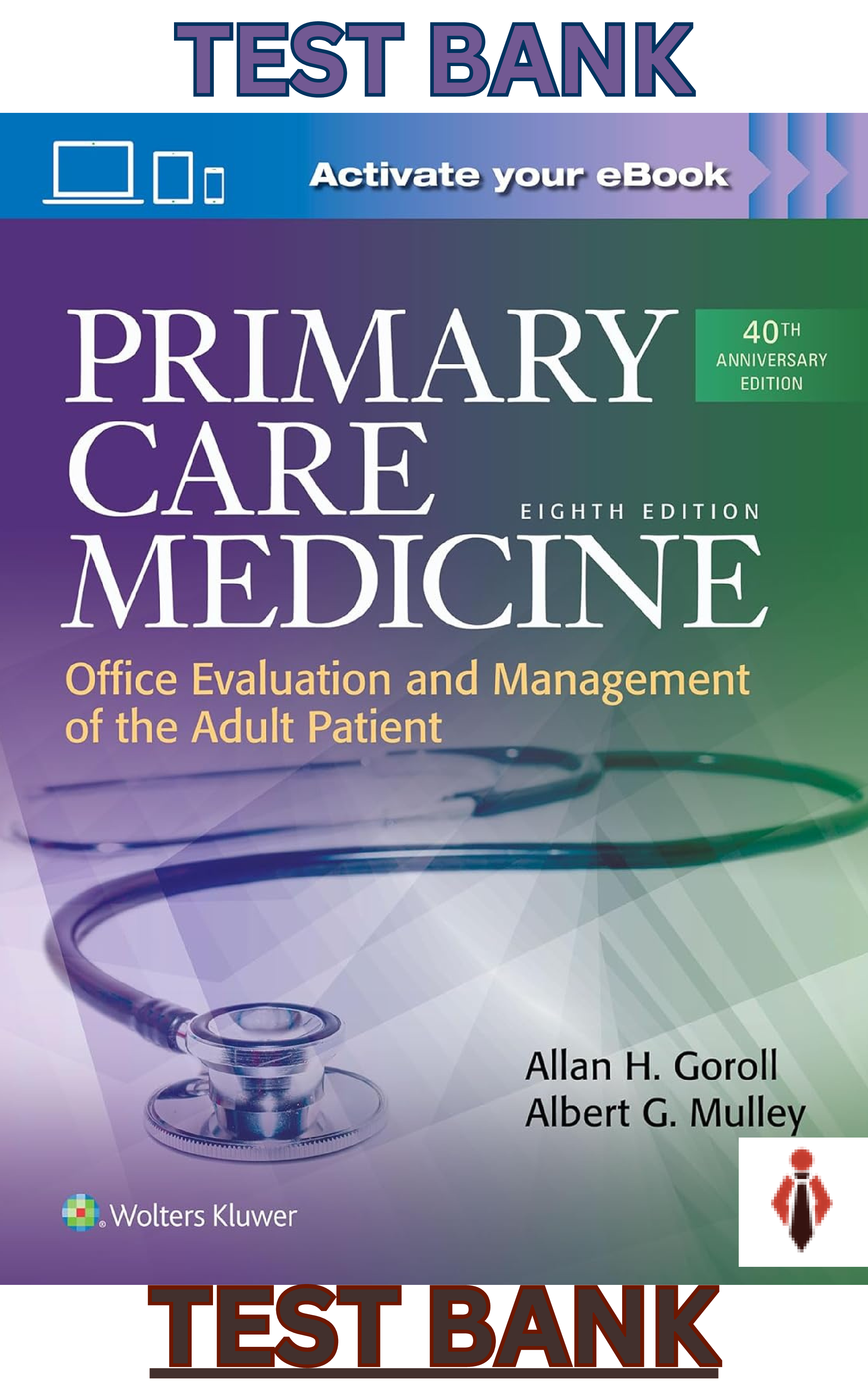
.png)







